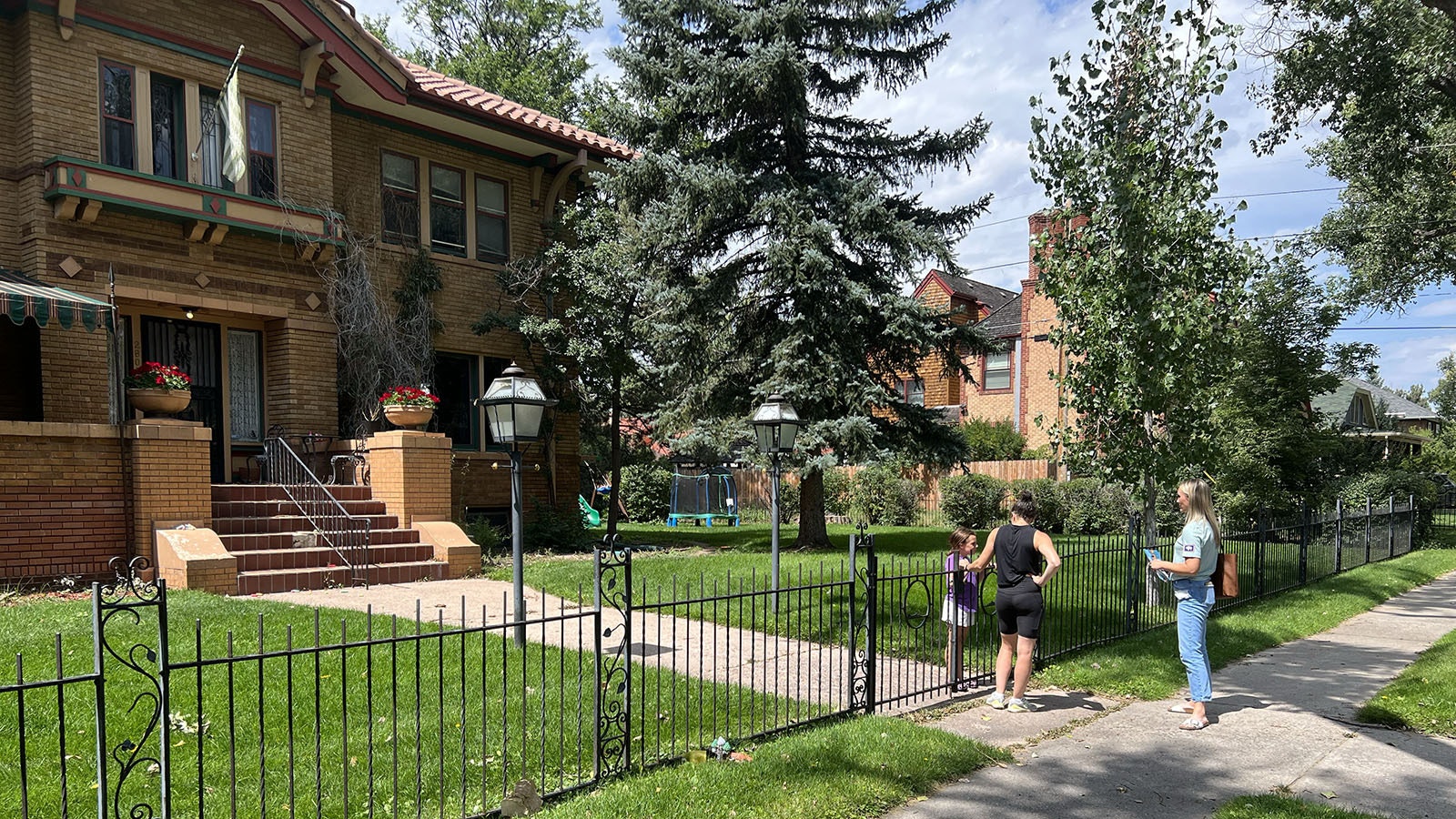By Mark Davis, Powell Tribune
There was a flurry of activity on an otherwise typically tranquil early Sunday morning on Bent Street. Massive machine parts were squeezed through the double doors at WYOld West Brewing Company and carefully reassembled into what little room was available between the business’s numerous towering conical tanks.
It barely fit, but somehow they made it work and by 9 a.m the company was making history: filling their first cans of craft beer for distribution. It’s the company’s first toe dipped in the marketing pool outside their popular brewery and restaurant.
WYOld West’s first move was to produce 400 cases of beer. Soon it will be hitting shelves across Wyoming, including local stores and a limited supply at the Powell restaurants.
Before the first green can of Kilted Cowboy Scottish Ale made its way down the production line, the project was already a success, said head brewer Steve Samuelson: Almost the entire run of 1,200 gallons of beer have already sold.
It took months, if not years of planning, he said. Still, there were exposed nerves as the production line was tweaked and the crew slowly began assembling pallets of two brews, which also included Bronc Buster Blonde Ale.
The process has taxed the brew crew. They had to make enough beer to both fill the cans and ensure they wouldn’t run out in their locations in Powell and Cody. The recipe also had to be altered. Originally the beers were unfiltered, but that had to change to accommodate the canning process.
If the test run is successful, WYOld will start the process over and do a second round of canning in about six weeks. “We’ve had the goal of canning our beer for years now,” said head chef and investor Ryan Gutierrez. “This is an exciting opportunity for a company.”
Getting beer out to fans across the state is the first step in a much more ambitious plan.
“This is just the tip of the iceberg,” said co-owner Jessica Laughlin.
If all goes well, the company will build a new location to accommodate a permanent canning facility, coupled with a larger brewing set-up, she said. They also hope to add more of their 13 flavors to the distribution list. But first they had to fill orders by Teton Distributing and Quality Brands of Cheyenne.
Laughlin credited Samuelson for improving the brews and speeding up the distribution plan. Samuelson has been in the business for decades, moving to Powell from Seattle for his current position.
“They brought me in to improve recipes and make beer to can,” he said. “I love it here. The pace is better — really good for me and my wife.”
Tyler Evans, sous chef for the restaurant, patiently fielded jokes coming from his co-workers as the cans rolled off the production line in six-packs.
Evans is the new face of Kilted Cowboy, the brewery’s best selling beer. When he modeled for the label he was told nobody would recognize him. Yet he couldn’t be more recognizable in the picture. But it’s not his face, or even his “ZZ Top” whiskers that were the butt of jokes; it’s his attire. Evans is pictured in a kilt, cowboy boots and hat tipping back a beer. He sported a big grin when he first saw the cans.
Cody Regional Health
“I bet your wife will never want to see you in those boots again,” one of the crew members quipped.
The jokes rolled off of him like water on a duck.
“It’s pretty cool. I’m pretty excited about it,” Evans said. “It turned out really good and I ended up on a beer that I really enjoy.”
The photograph of Evans and the designs were created by Kelly Laughlin — owner of Design | Print | Market with Kelly, a brewery employee and Jessica’s mom. For the Bronc Buster Blonde Ale label, Mariah Joy was photographed by Northwest College professor Morgan Tyree at the Trapper rodeo arena.
Like everything in the process, WYOld West tries to make sure every move it makes, from the grains used to produce the beer to business decisions, is done locally. Every can carries their motto: “Grown here, brewed here.”
The production line was brought in by Montana Canning. They travel around the region subcontracting for breweries, using a Wild Goose filling station with a proprietary six-pack assembler to save the time of piecing together the packs by hand.
“We stay pretty busy,” said Naomi Gerheim, one half of the canning crew along with husband Tim. “We’re going to be in Livingston [Montana] for a couple days right after this.”
While bottles continue to dominate beer packaging, that dominance is slipping to cans, according to the Brewers Association, a national organization for small and independent craft brewers.
“Bottles still clearly outsell cans, but the can percentage continues to rise,” economist Bart Watson said in a recent article. “Note that the percentage rise isn’t because of a decline in bottle sales (which have continued to climb), but simply because the increase in can sales has been faster than the increase in bottle sales.”
Naomi Gerheim said cans are more convenient.
“You can you can take it anywhere. If you want to go hunting or if you want to go on the river or hiking, it’s a lot easier to carry,” she said, comparing them to bottles or growlers. They are also easier to recycle, she said.
Social distancing due to the COVID-19 pandemic was a double whammy on the craft beer industry. Not only was business driven out of pubs and restaurants, but shipping and production of canning materials was adversely affected while many micro breweries attempted to begin canning their brews to get beer into customers’ hands.
At least until WYOld West can build a new facility, Montana Canning will be making trips to Wyoming, getting Powell brews ready to ship.





